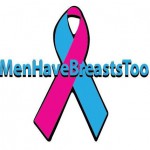Life is about not knowing, having to change, taking the moment and making the best of it, without knowing what’s going to happen next. ~Gilda Radnor
 Many people with breast cancer (or a history of it) dread October. Instead of enjoying autumn’s oranges, reds and yellows, they see a flood of pink ribbons and awareness paraphernalia. Some question how this all started.
Many people with breast cancer (or a history of it) dread October. Instead of enjoying autumn’s oranges, reds and yellows, they see a flood of pink ribbons and awareness paraphernalia. Some question how this all started.
How did the Breast Cancer Awareness Month Begin?
The American Cancer Society and Imperial Chemical Industries founded October as National Breast Cancer Awareness Month in 1985. The Awareness goal? Promoting mammography as a screening tool to “fight” breast cancer.
In a recent study, seventy-eight percent (78%) of women agreed that mammography should be conducted (in addition to healthcare provider exams and self-exams). It seems that many women are aware of mammograms. Perhaps it’s time for new objectives.
New Breast Cancer Awareness Goals
-
Goal One: Awareness of What “Cured” Means
There is much confusion about “the cure.” In a video by MetaVivor, Cece Curry shared her experience,
“They called me cured, that’s what they told me…so I didn’t think that it would ever come back….I think it is a good idea for them not to use that word anymore…even if it’s as early as stage 1 or 0.”
Cece died of metastatic breast cancer on June 1, 2013.
In medical language, someone is “cured” of cancer if they survive without a relapse for 5 years after completion of treatment. For some cancers, “cure” is living for 10 years without relapse or spread of cancer to other organs.
So, when organizations say they are raising money for “the cure” of breast cancer, what does this mean? Are they raising money to cure breast cancer?
After 30 years of mammogram awareness, although there is some variability, the conservative figure for relapse is 1 in 5 or 20% but others say 30% will recur. The variability is caused by the fact that there is no registry for metastatic breast cancer.
The European Society of Medical Oncology states that “Approximately 5% to 10% of breast cancers are metastatic at diagnosis; of these, approximately one-fifth will survive 5 years. Depending on prognostic factors, up to 30% of node-negative and up to 70% of node-positive breast cancers will relapse.”
The sad fact is that these figures remain unchanged even though millions have been spent over the last 30 years since the first Breast Cancer Awareness Month.
-
Goal Three: Men Get Breast Cancer Too

Breast cancer is not just a woman’s disease, even though pink is its color. Pink, before WWII, was the color for boys, according to Jo B. Paoletti, a historian at the University of Maryland. In the 1980s, pink became a feminine color. The culture of pink and femininity pervades breast cancer-to the point that even breast cancer medical centers are colored pink. Yet men get breast cancer too.
-
Goal Four: More Research On Metastases Is Needed
“What do they mean by the cure?…they never say preventing death from stage 4 disease…they say we’re going to cure it by preventing it and detecting it early.”~Dian Corneliussen
Since people die of metastatic disease, the only way to cure breast cancer is to learn about metastases and metastatic breast cancer.
New directions in precision medicine hold promise. Precision medicine is defined as, “A form of medicine that uses information about a person’s genes, proteins, and environment to prevent, diagnose, and treat disease.”
One exciting trend in this area of research is the study of Exceptional Responders to cancer therapies. This type of work looks at the genetic profile of cancers of these Exceptional Responders to find out why they were cured. Once researchers know this, they match cancers of other people that have the same genetic profile as the cancer that is cured.
Cancers of different organs can have the same genetic profile. So a drug that cures someone of thyroid cancer can potentially be used to cure someone else of ovarian cancer. This is what the Exceptional Responders Initiative looks for.
-
A New Research Project
“If you have metastatic breast cancer, join a nationwide movement of patients, doctors, and scientists by sharing your tumor samples, your medical information, and your voice. Together, we can speed the development of future therapies.” –MBCProject
 Research on Exceptional Responders is being built into a project on metastatic breast cancer. Corrie Painter,PhD is one of the leaders of a project that brings the metastatic breast cancer community of patients, together with geneticists researchers at the Broad Institute and cancer researchers at Dana Farber Cancer Institute. The project, The #MBCProject, stands for metastatic breast cancer and it is designed to accelerate discoveries and treatments for breast cancer metastases through understanding genomics. The project is being done in partnership with advocacy groups like the Metastatic Breast Cancer Alliance, the Metastatic Breast Cancer Network, the Avon Foundation, Living Beyond Breast Cancer, the Young Survival Coalition, and the Inflammatory Breast Cancer Research Foundation.
Research on Exceptional Responders is being built into a project on metastatic breast cancer. Corrie Painter,PhD is one of the leaders of a project that brings the metastatic breast cancer community of patients, together with geneticists researchers at the Broad Institute and cancer researchers at Dana Farber Cancer Institute. The project, The #MBCProject, stands for metastatic breast cancer and it is designed to accelerate discoveries and treatments for breast cancer metastases through understanding genomics. The project is being done in partnership with advocacy groups like the Metastatic Breast Cancer Alliance, the Metastatic Breast Cancer Network, the Avon Foundation, Living Beyond Breast Cancer, the Young Survival Coalition, and the Inflammatory Breast Cancer Research Foundation.
Email info@mbcproject.org or go to their website to participate.
-
Goal Five: “Cause Marketing” Awareness: What It Is and What It May Do
According to the Business Dictionary cause marketing is the “Joint funding and promotional strategy in which a firm’s sales are linked (and a percentage of the sales revenue is donated) to a charity or other public cause. However, unlike philanthropy, money spent in cause related marketing is considered an expense and is expected to show a return.”
The definition above explains why buying products that are pink from companies may not be as good as making a donation. The phrase “expected to show a return” means that in some way, the company selling the product is expected to make a profit from it.
People have been buying pink items because they think their money is going to the cure for cancer. Unfortunately, much of the money is not going to research. Survivors and their families (Breast Cancer Action in this case) have started campaigns, like “Think Before You Pink.” Organizations like this raise awareness about breast cancer marketing and its potential pitfalls. Be sure you understand the scope of donations to breast cancer support and research organizations if you purchase a “pink” product. If in doubt, don’t be afraid to ask questions about where raised funds actually go.
Make A Real Difference

Credit: ForestWander Nature Photography
So this October, enjoy the beauty of the autumn leaves and consider making a real difference in breast cancer and other cancers by supporting metastatic cancer research. Finally, if you have metastatic breast cancer, connect with the MBCproject.







Very good articles. Thank you.M.J.
Thank you MJ. I appreciate it. Kathleen